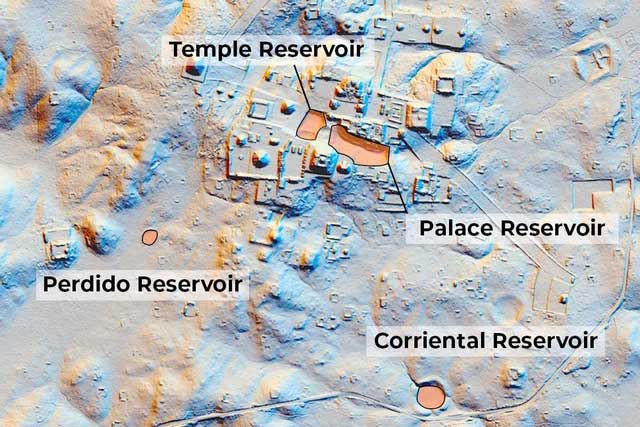A modern crisis threatening humanity may be mitigated by the methods that helped the Maya survive for over 1,000 years.
The Maya civilization has amazed humanity by developing an extraordinary culture, including extensive agricultural systems in some of the driest regions.
To achieve this, over 2,000 years ago, they developed large-scale irrigation projects, massive water storage systems, and astonishing water filtration technologies that are considered “ahead of their time,” including modern-style quartz filtration.
Recent research published in the Proceedings of the National Academy of Sciences focuses on one type of water filtration system among those.

LiDAR map of the ancient Maya city of Tikal, showcasing incredible infrastructure, including water reservoirs – (Photo: Bryan Lin).
Professor of anthropology Lisa Lucero from the University of Illinois Urbana-Champaign and her colleagues believe that a form of ancient “biotechnology” water filtration system developed by the Maya could serve as a model for modern systems.
This could help address the concerning global clean water crisis today and meet the sustainable water needs of the future.
This ancient biotechnology is remarkably simple and intelligent, discovered in the ancient cities of the Maya throughout Central America.
According to SciTech Daily, these cities contained networks of massive water reservoirs capable of providing clean drinking water for thousands to tens of thousands of people throughout the five-month dry season each year and during even longer drought periods.
This was a tremendous effort by the Maya, as the water sources in their region were often contaminated, containing heavy metals and other harmful substances.
Therefore, in addition to building reservoirs, canals, dams, drains, and levees to distribute clean water and manage wastewater, the Maya invested in water filtration systems.
Among these, some reservoirs used quartz and zeolite sand. Others employed native aquatic plants to purify the water, particularly in areas lacking quartz and other water-filtering minerals.
The famous city of Tikal (located in present-day Guatemala) is one such example.
To acquire quartz, it would have to be transported from very distant locations. Thus, the Maya royalty opted to use the ancient “biotechnology.” The aquatic plants utilized included bulrushes, reeds, and cat-tail grass (sedge, candle grass)…
These plants have been found in sediment in the ancient Maya lakes.
They are capable of reducing water turbidity, absorbing nitrogen and phosphorus. Evidence clearly shows that the Maya actively cultivated these plants within the reservoirs, renewing them periodically.
Among the aquatic plants used was the native water lily species Nymphaea ampla, which thrives only in clean water.
This helps explain a significant mystery: the water lily symbolized royalty for the Maya. The Maya elite achieved their status thanks to the “timeless” clean water technology.


















































